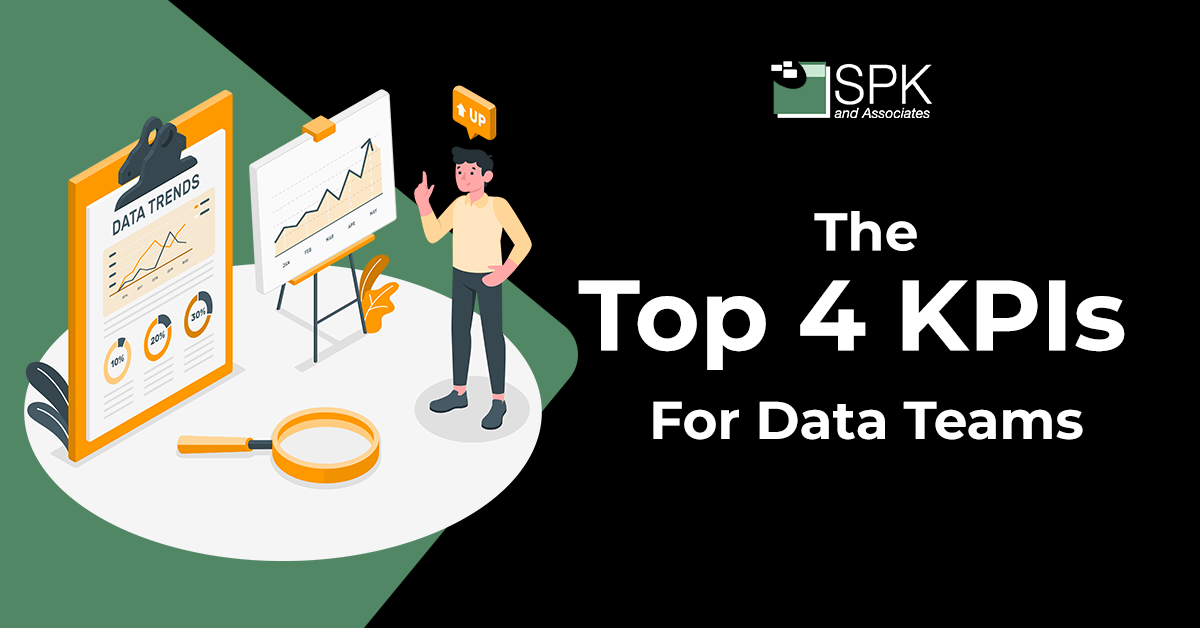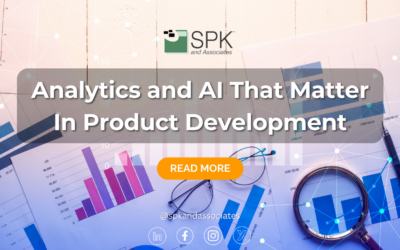As a decision-maker in your small and medium business, you will be looking to drive your stability and growth. Data teams play a pivotal role in how you achieve this. After all, they are the team responsible for building, measuring, analyzing and reporting everything in your business. Measuring the effectiveness of your data team’s capability is therefore also crucial. In this blog, we’ll show you how to set KPIs for data teams.
Before we look into the metrics of data teams though, let’s first understand what “themes” are worth measuring.
What KPIs Do You Need To Focus On For Data Teams?
When your data team is performing to their purpose, so will your business. Companies without strong data practices will not hold a competitive advantage. Fact.
Companies that thrive on collecting as much data to drive intelligence are more likely to thrive. Also fact. But collecting data is just one part of the puzzle. Therefore, it’s also critical to understand and evolve methods for:
-
-
- Data capture.
- Data utilization.
- Data engineering (the merging of different data sets)
- Data analysis.
-


In parallel, you should also consider the purpose of data teams. Sure, their focus is to drive inputs and outputs to the four points above. But, their purpose is to create ease, efficiency, quality and value through data. By driving KPIs through their team purpose, it creates a vision that isn’t solely focused on the tools they use. However, the tools they use will naturally become part of how they achieve their purpose. And therefore by using the right tools, they will achieve their KPIs.
We recommend that you set KPIs for data analytics teams based on:
-
-
- Ease.
- Efficiency.
- Quality.
- Value.
-
1. Ease Of Getting Data
Firstly, we recommend the first KPI for the data analytics team to be ease of getting data.
Data teams that can create ease of access to data for both IT and non-IT people drive results faster. By creating functionalities to drive results, the intelligence load is spread further. Whether it’s a team looking to get the latest insights on their testing or an exec in need of a dashboard to monitor operational effectiveness, data drives results. Additionally, visualization tools make data easily accessible and easy to read for non-IT people. PowerBI is a perfect example. With these tools, colleagues can potentially identify and question trends or anomalies that may not have been spotted. This is the helm of innovation.
Other sub-metric opportunities to create data easing include:
-
-
- Self-serve capabilities for non-IT people – this could have sub-metrics such as the adoption and utilization of Jira and Confluence, or a drive-in reduction for simple service desk tickets.
- For data engineers, they could focus on reducing the number of unused, or unless data products. When these are removed, or data is centralized into a single pane of glass, for instance, this creates the ease to find intelligence.
- For teams deploying new models, they could also focus their sub-metrics on how much effort and time it takes to successfully deploy models.
-
Measuring the volume (or types) of raw data strings flowing into big data lakes. For now you may not know what opportunity is on the horizon. Therefore creating a KPI to encourage the adoption of a data lake can be critical for unforecasted opportunities.
2. Driving Business Efficiency
Secondly, we recommend that you set KPIs for data analytics team that focus on driving business efficiency. So whilst ease is focused on removing the stress from data access, efficiency is focused on the time surrounding potential stressors. When business operations can be performed effectively, and at speed, operational excellence will follow.
It is a well-known fact that creative minds are bored by monotonous tasks. That’s why process automation can boost both productivity and morale in your business. Now, imagine the power of creating accountability for seeking out the low-hanging fruit to automate. And having your data team track the number of tasks automated that are driving operational efficiencies. And, reducing human error that requires rework. Powerful stuff, right?
Other sub-metric opportunities to effectively plan, predict or track include:
-
-
- Errors per unit, per amount to show how reliable and correct the data products are.
- System performance and outages.
- Service uptime or service loss (in instances where a total outage doesn’t occur).
- Tracking the effectiveness of your cloud computing solution vs company growth.
-
3. Increasing Quality Through Data
Thirdly, for most businesses, one of the biggest opportunities is quantitative data quality. Why? Because any business can have lots of data. But, not all businesses have lots of quality data that drives decision-making. Big data can easily accelerate small and medium businesses if it is quality data that has been collated and merged with purpose.
Consider what tools you currently utilize for data capture and utilization. Create KPIs for your data team on how these methods can be improved.
Other sub-metrics for consideration could include:
- Subjective insights from data users on the quality of data sets and products.
- Tracking the number of incidents related to data quality issue.
4. Driving Value For The Business And Customer
Ultimately, businesses know that data doesn’t just drive decisions. It drives decisions that drive value. That can be to both the business or the customer.
So, it makes sense to also set a KPI for your data teams along the lines of business value created, doesn’t it. Then, this metric can identify how much value is actually being created by the utilization or engineering of data products.
Another powerful sub-metric for consideration is:
- Customer value created that measures customer experience and satisfaction. This could include user experience attributes such as site speed.
Other Considerations When Setting KPIs
In the world of tech, data, and Agile, there is one underlying principle. Fail fast, learn quick. Your KPI mentality needs to be reflective of this. If you set a KPI and you find it needs tweaking, or you need to realign to a pivot in the business, do it. Don’t get hung up on KPIs being set in stone forever. They are there to provide focus to the purpose….not be the purpose for business. Make sure to revisit your company KPIs quarterly at a bare minimum.
Conclusion
When setting your KPIs, don’t set them based solely on what you want individuals to achieve that drive your ROI. Set them based on the purpose of the team. This creates a deeper alignment to the overall business strategy and shows clear direction for how data teams, and data roles fit within that framework.
By creating KPIs for data teams based on ease, efficiency, quality and value, it creates a clear structure to the overall vision. It also allows for innovation as to how they achieve that, versus a bog standard “measure this” or “merge this” mentality.
If you are considering utilizing data visualization tools like PowerBi or a single pane of glass in your company SPK can help. We’re also experts in big data analytics and cloud computing. So if you need a hand to get your data in order, or to refine the KPIs for data teams in your company, contact us here.





